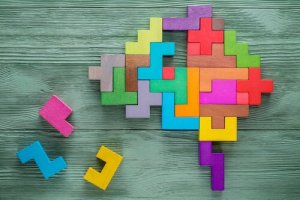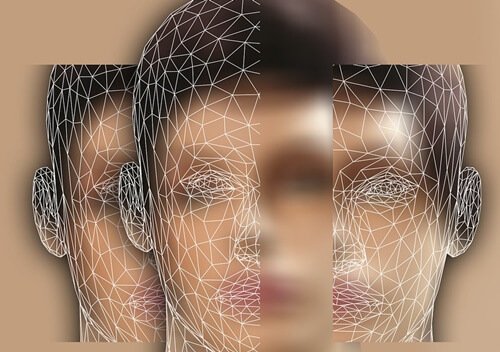Jeffrey Young's Schema Therapy Model


Written and verified by the psychologist Valeria Sabater
Jeffrey Young’s schema therapy model is very effective for chronic psychological disorders. It’s also useful in cases when patients aren’t responding to other therapies. This interesting method integrates attachment theory, Gestalt theory, constructivism, some elements of psychoanalysis, and cognitive behavioral therapy.
If there’s one thing that all psychologists know, it’s that some cases are very difficult to treat, due to reasons such as the patient’s personality, the relapse rate, and the disorder itself. Personality disorders, for example, present multiple challenges for any mental health professional.
These kinds of psychological conditions benefit enormously from therapies with a broader focus. According to a study from the University of North Texas and City University of New York, combining psychological therapy with social education, workshops, and mindfulness can prove very successful for difficult patients.
Integrated methods work, and there’s no doubt that the most well-recognized of all of them is schema therapy. When Jeffrey Young first developed his schema theory, it was considered an improvement of Aaron T. Beck’s cognitive therapy.
“Patients must be willing to give up their maladaptive coping styles in order to change. For example, patients who continue surrendering to the schema—by remaining in destructive relationships or by not setting limits in their personal or work lives -perpetuate the schema and aren’t able to make significant progress in therapy.”
-Jeffrey E. Young-

Schema Therapy: An Integrated Focus
Psychologist Jeffrey E. Young has spent the last 20 years developing schema therapy based on his experience and the clinical demands of his everyday work. In this regard, his book Schema Therapy: A Practitioner’s Guide stands out as an interesting and complete manual for schema therapy. Not only does he offer the tools that mental health professionals need to deal with difficult and complex cases, but it also helps you reflect and understand why sticking to a single method isn’t always a good thing.
Holistic methods such as schema therapy use the most effective tools from different methods to maximize patient benefit. Let’s take a closer look at how schema therapy works.
The Goals of Schema Therapy
As the name suggests, this therapy seeks to identify the dysfunctional schemas that lead an individual to think and act in problematic and self-harming ways. To that end, this therapy uses the following guidelines:
- Unlike cognitive behavioral therapy, schema therapy doesn’t use confrontation or guided discovery. Instead, it’s based more on emotional therapy.
- Likewise, it’s important to mention that this kind of therapy lasts longer than others. Patients need more sessions in order to get results.
- Schema therapy tries to find dysfunctional habits that were established during an individual’s childhood.
- The mental health professional works on the patient’s sense of identity, their capacity for self-control, their emotional communication, autonomy, and sense of competence.

Which Patients Can Benefit from this Therapy?
Schema therapy is especially effective for disorders in Axis 1 of the DSM-V (Diagnostic and Statistical Manual of Mental Disorders). Axis 1 includes the following clinical conditions:
- Anxiety disorders.
- Mood disorders.
- Dissociative disorders.
Likewise, Jeffrey Young emphasizes the following:
- This therapy is beneficial for anyone who has a hard time talking about their feelings, thoughts, and emotions. This method is useful for blocks or negative associations.
- Patients with an existential crisis or those who aren’t motivated to go to therapy can also benefit from it.
The Two Pillars of Schema Therapy
Schema therapy operates in two basic areas:
Identifying the Schemas that Explain the Patient’s Behavior
In cognitive behavioral therapy, a schema is a pattern that determines the way you think and act. Many schemas lead to suffering, such as an unhappy relationship or living a destructive life.
Jeffrey Young highlights the importance of identifying early life experiences and the patient’s emotional temperament. In this therapy, the primary focus is detecting early maladaptive schemas and their origins.
How Does Schema Therapy Approach these Issues?
The coping mechanism you use to deal with everyday challenges and events will depend on the schemas you have. Dr. Young identified three maladaptive coping mechanisms:
- Avoidance. When you find ways to escape from or block out your schemas and responsibilities.
- Surrender. Every time you have to cope with something, you feel sad, scared, defenseless, incapable, and empty. Consequently, you simply can’t face life. This is common in the kind of depression that’s very resistant to therapy.
- Overcompensation. In this case, you tend to react with violence or overcompensate. As a result, your responses to everyday problems are extreme. This coping mechanism is common in people with borderline personality disorder.

On average, this therapy lasts about a year. It’s a difficult and profound process that requires the therapist to have an excellent connection with the patient. When the patient feels comfortable with the therapist, they can work on identifying their problematic schemas.
Later, psychologists use Gestalt therapy, psychoanalysis, cognitive behavioral therapy, and emotional therapy to guide the patient in building new valid, effective, and healthy schemas. In conclusion, schema therapy is as interesting as it is useful for many patients with mental health problems.
Jeffrey Young’s schema therapy model is very effective for chronic psychological disorders. It’s also useful in cases when patients aren’t responding to other therapies. This interesting method integrates attachment theory, Gestalt theory, constructivism, some elements of psychoanalysis, and cognitive behavioral therapy.
If there’s one thing that all psychologists know, it’s that some cases are very difficult to treat, due to reasons such as the patient’s personality, the relapse rate, and the disorder itself. Personality disorders, for example, present multiple challenges for any mental health professional.
These kinds of psychological conditions benefit enormously from therapies with a broader focus. According to a study from the University of North Texas and City University of New York, combining psychological therapy with social education, workshops, and mindfulness can prove very successful for difficult patients.
Integrated methods work, and there’s no doubt that the most well-recognized of all of them is schema therapy. When Jeffrey Young first developed his schema theory, it was considered an improvement of Aaron T. Beck’s cognitive therapy.
“Patients must be willing to give up their maladaptive coping styles in order to change. For example, patients who continue surrendering to the schema—by remaining in destructive relationships or by not setting limits in their personal or work lives -perpetuate the schema and aren’t able to make significant progress in therapy.”
-Jeffrey E. Young-

Schema Therapy: An Integrated Focus
Psychologist Jeffrey E. Young has spent the last 20 years developing schema therapy based on his experience and the clinical demands of his everyday work. In this regard, his book Schema Therapy: A Practitioner’s Guide stands out as an interesting and complete manual for schema therapy. Not only does he offer the tools that mental health professionals need to deal with difficult and complex cases, but it also helps you reflect and understand why sticking to a single method isn’t always a good thing.
Holistic methods such as schema therapy use the most effective tools from different methods to maximize patient benefit. Let’s take a closer look at how schema therapy works.
The Goals of Schema Therapy
As the name suggests, this therapy seeks to identify the dysfunctional schemas that lead an individual to think and act in problematic and self-harming ways. To that end, this therapy uses the following guidelines:
- Unlike cognitive behavioral therapy, schema therapy doesn’t use confrontation or guided discovery. Instead, it’s based more on emotional therapy.
- Likewise, it’s important to mention that this kind of therapy lasts longer than others. Patients need more sessions in order to get results.
- Schema therapy tries to find dysfunctional habits that were established during an individual’s childhood.
- The mental health professional works on the patient’s sense of identity, their capacity for self-control, their emotional communication, autonomy, and sense of competence.

Which Patients Can Benefit from this Therapy?
Schema therapy is especially effective for disorders in Axis 1 of the DSM-V (Diagnostic and Statistical Manual of Mental Disorders). Axis 1 includes the following clinical conditions:
- Anxiety disorders.
- Mood disorders.
- Dissociative disorders.
Likewise, Jeffrey Young emphasizes the following:
- This therapy is beneficial for anyone who has a hard time talking about their feelings, thoughts, and emotions. This method is useful for blocks or negative associations.
- Patients with an existential crisis or those who aren’t motivated to go to therapy can also benefit from it.
The Two Pillars of Schema Therapy
Schema therapy operates in two basic areas:
Identifying the Schemas that Explain the Patient’s Behavior
In cognitive behavioral therapy, a schema is a pattern that determines the way you think and act. Many schemas lead to suffering, such as an unhappy relationship or living a destructive life.
Jeffrey Young highlights the importance of identifying early life experiences and the patient’s emotional temperament. In this therapy, the primary focus is detecting early maladaptive schemas and their origins.
How Does Schema Therapy Approach these Issues?
The coping mechanism you use to deal with everyday challenges and events will depend on the schemas you have. Dr. Young identified three maladaptive coping mechanisms:
- Avoidance. When you find ways to escape from or block out your schemas and responsibilities.
- Surrender. Every time you have to cope with something, you feel sad, scared, defenseless, incapable, and empty. Consequently, you simply can’t face life. This is common in the kind of depression that’s very resistant to therapy.
- Overcompensation. In this case, you tend to react with violence or overcompensate. As a result, your responses to everyday problems are extreme. This coping mechanism is common in people with borderline personality disorder.

On average, this therapy lasts about a year. It’s a difficult and profound process that requires the therapist to have an excellent connection with the patient. When the patient feels comfortable with the therapist, they can work on identifying their problematic schemas.
Later, psychologists use Gestalt therapy, psychoanalysis, cognitive behavioral therapy, and emotional therapy to guide the patient in building new valid, effective, and healthy schemas. In conclusion, schema therapy is as interesting as it is useful for many patients with mental health problems.
All cited sources were thoroughly reviewed by our team to ensure their quality, reliability, currency, and validity. The bibliography of this article was considered reliable and of academic or scientific accuracy.
- Young, J. (1999): Reinventing Your Life. New York: Plume.
- Young J. (2003): Schema Therapy: A Practitioner‘s Guide. New York: Guilford.
This text is provided for informational purposes only and does not replace consultation with a professional. If in doubt, consult your specialist.







